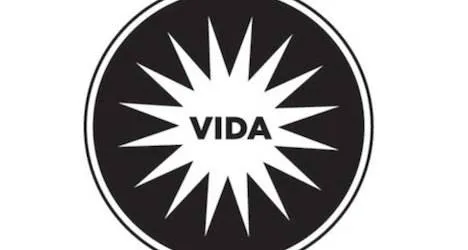
VIDA Count 2015: Breaking Barriers
The VIDA count is upon us once again, bringing a survey of the literary journal landscape from 2015 for review. Literary journals have long been the stronghold of male writers, but there is a clear shift towards inclusion that we’ve seen happening.
This year, the VIDA count has expanded from three broad categories (the VIDA Count, the Women of Color VIDA Count, and the Larger Literary Landscape VIDA Count) into several smaller surveys under those three categories. Intersectionality is the key word here, as VIDA has now included sections on sexuality, disability/difference, and trans women writers–indeed, the organization calls 2015 “The Year of Intersectional Thinking,” and the reason for their focus is clear:
If the literary landscape is dominated by specific groups, how can we be healthy as a society and benefit from both our differences and commonalities? Isn’t one of literature’s effects to humanize populations beyond our own?So let’s take a look at the state of literary journals over the last year with VIDA. 700 writers filled in the survey earlier this year, a 50% turnout, and the results are rather encouraging. With the exception of The Atlantic and The Paris Review, the main literary journals all improved their numbers from 2014. Happily, I can share that trans women were included among the number of bylines given to women: one transfeminine and two genderfluid trans women wrote for Poetry, and 0.1% of writers identified as trans women in The Times Literary Supplement. Moving into the Larger Literary Landscape, numbers are up across the board for women writers, with many publications nearing gender parity at 30-50% of bylines by women. The New Republic has done great things for women of colour writers this past year, with 17 of 47 bylines submitted by survey respondents. Things aren’t so great over at The New York Times Book Review, as only one WOC writer responded with a byline in that publication. Looking at sexual identification, The New Yorker gets full marks this year for having published women writers in all categories, with Poetry in a close second place. Again, The Atlantic‘s numbers don’t really inspire praise, with only one non-straight writer. As for disability/difference numbers, less than half of the VIDA Main Count publications had bylines by writers with a disability. The Times Literary Supplement published 11 writers who identified as disabled, while five writers had bylines at Tin House. And to round out the count, VIDA discovered that of the 15 publications included in their Main Count, eight had bylines by trans women, including genderfluid and transfeminine writers. Here’s hoping the other seven, including Granta and Harper’s, work to change that in 2016. Overall, the 2015 VIDA Count is an encouraging set of numbers, and a testament to the continued conversations around diversity in the literary community. I’m especially pleased that VIDA would make a point of highlighting writers with disability and trans women, as these identities have been ignored even within diversity discussions. While steps have been and are still being taken to achieve parity across intersections for women, it’s clear that there is a lot of work left to do to bring women’s voices to the forefront. With eight months left in 2016, there’s plenty of time for editors and writers alike to continue changing the landscape.









